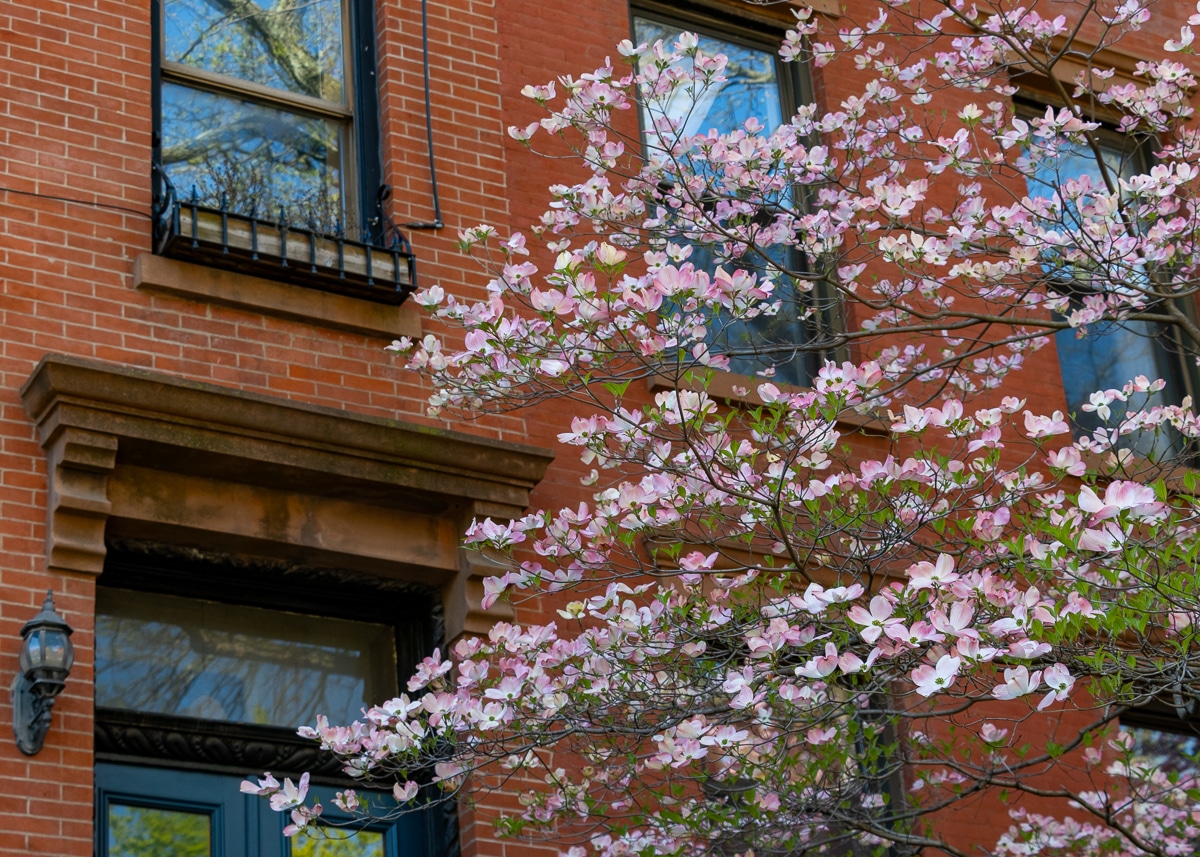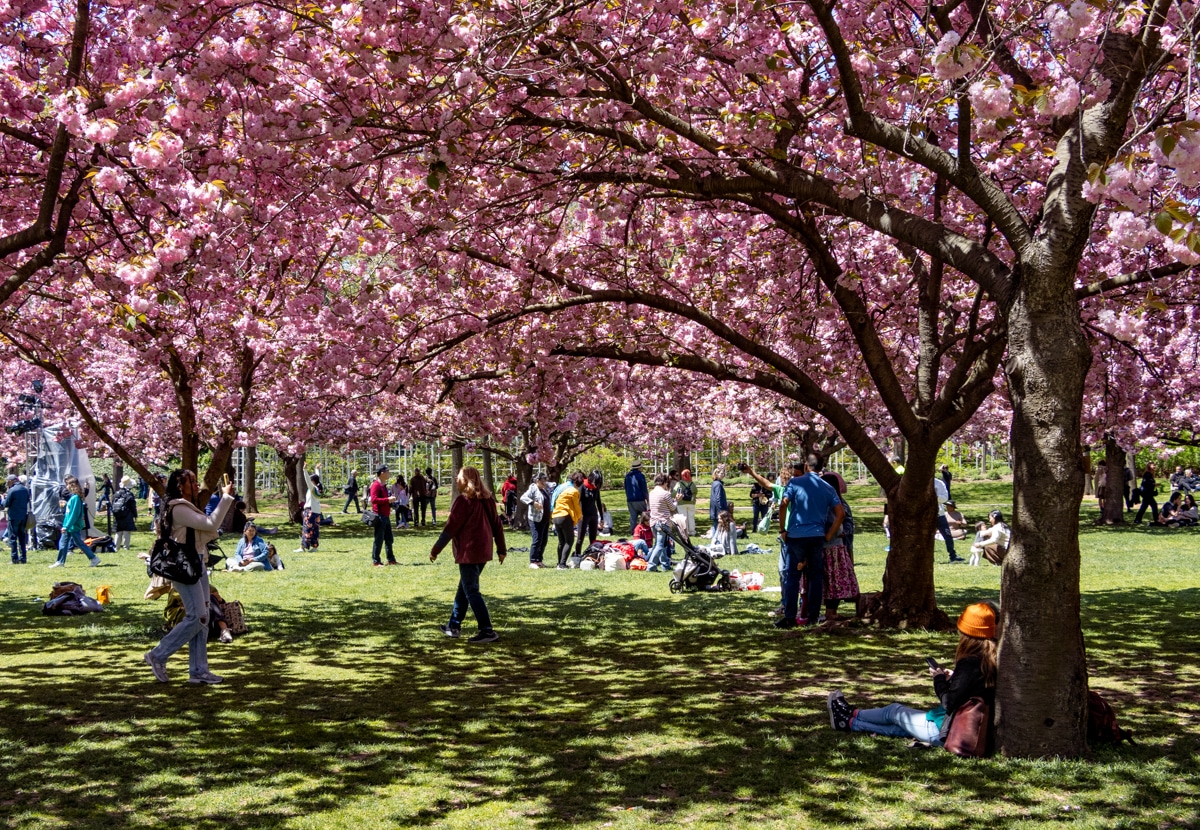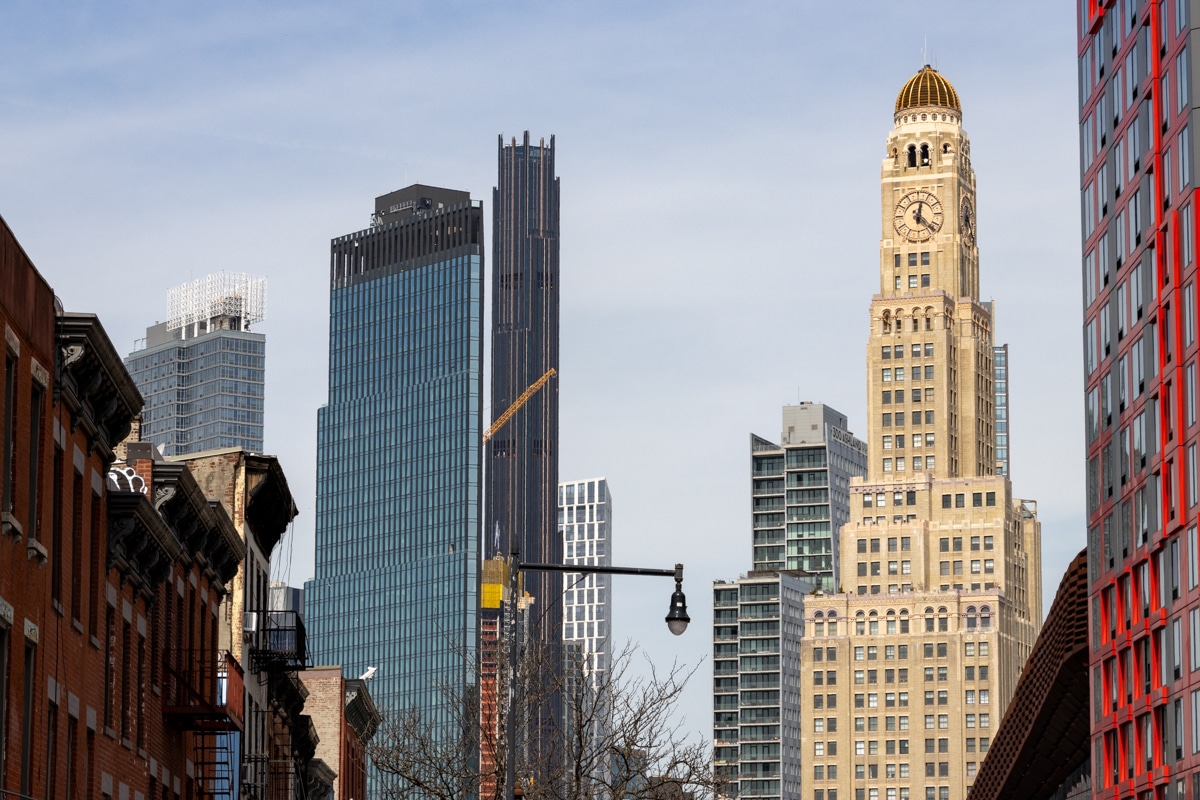Walkabout: Victorian Woodwork and Paint
A quick search on our own Brownstoner Forum, or in any old house/restoration magazine or website, will soon come up with someone asking about painting and woodwork. The following is a timeline of what kind of finishes were used at the time, from around 1830 to the beginning of the 20th century. As time goes…


A quick search on our own Brownstoner Forum, or in any old house/restoration magazine or website, will soon come up with someone asking about painting and woodwork.
The following is a timeline of what kind of finishes were used at the time, from around 1830 to the beginning of the 20th century. As time goes by, popular opinion changes, as does the finish and look of woodwork in the home.
We have very few homes in Brooklyn from before the early 1800’s, so I’ll start there. Paint. That was the traditional finish of earlier Federal style homes, of the late 1700’s, and that carried well into the 1830’s.
Woodwork, baseboards, doors, wooden mantle pieces, built-ins, window and door frames were painted. In the 1830’s, the tastemakers of the day, including Andrew Jackson Downing, advocated three gradations of color for a room. The ceiling was the lightest, followed by a darker wall, and the darkest hues were reserved for the woodwork.

Especially popular at the time was wood graining and faux marbleizing. An oil base coat was painted, followed by another coat of a thinned darker paint, with was then manipulated with special tools and brushes to mimic the grain lines and natural features of different species of wood.
A top layer of varnish would protect the graining from wear and tear. In a similar way, various types of marble could also be faux painted on fireplace mantels, columns and paneling.
While itinerant painters and professional grainers did ply their craft, graining was seen as a skill that almost anyone could do, with a little practice, and this paint treatment appears in homes both grand and modest.
For those who did not faux grain, a dark paint color was preferred. For our brownstones, this would have been the recommended treatment for Greek Revival homes.

By the 1850’s and up to the Civil War, when Italianate and Gothic Revival brownstones and homes were being built, times changed. The domestic critics began to like bare wood.
One home adviser suggested the proper woods for an American home were patriotic national woods, like Southern pine, black walnut, American oak and chestnut. He also recommended that wainscoting and other woodwork be oiled with boiled linseed oil, or other oils, not varnished.
Architects at this time began to reintroduce the chair rail, which had fallen into disuse. They were seen as necessary to protect the walls and wallpaper, which was hugely popular at this time, from the backs of chairs, and careless people.
Catherine Beecher and Harriet Beecher Stowe, in their book The American Woman’s Home, also advocated natural wood, and decried the still popular practice of using lesser grades of wood, and faux graining them.

In spite of what the experts said, however, most people still preferred the faux grained or painted finishes of the earlier decades. Decorative paneling was also very popular, with wall spaces broken up by small pieces of wood or plaster framing creating boxes or frames.
As these frames got more elaborate, critics began decrying their use, one critic explaining that the ornate crests and curlicues were nothing more than dust catchers and places for spiders to weave their webs. One would write, Bases, casings, doors and sashes should all be plain, and painted or stained a quiet russet color, a color natural to the wood…..there is no poetry about common housecleaning.
The period between 1870 and 1890 changed everything. This is when our Neo-Grecs were built, as well as the Queen Anne and Romanesque Revival houses.

This is the time of High Victorian style, with the patterns and influence of the Aesthetic Movement the greatest influence. A wall was now a tri-partite affair, with a frieze near the ceiling, a dado or wainscoted paneling on the bottom, with a field of wall in the middle.
The wainscot could be a wallpaper, like Lincrusta, or it could be wood. Ornate wooden mantlepieces, built-ins, doors and other woodwork were important to the overall decor in the room. They were often the only calm in a fussy room with lots of color and pattern on the walls, ceilings, draperies, and furniture.
Natural wood was back in vogue. By in large, stained hardwoods were ideal, while softwoods, usually relegated to lesser areas of a house, could be painted, but for one critic and home writer, white was objectionable.

This writer also didn’t like faux graining, complaining that it only took a scrape to expose peeling strips amidst the exposed under wood. Since the parlor floor was the public floor, this is where the best woods were used, and where everyone advocated natural woods, stained and varnished.
Upstairs, in the bedrooms, paint was still allowed. Interestingly enough, the colors many of the period found most appealing would not appeal to many now.
Constance Cary Harrington, a New York society writer and home expert, wrote that she liked woodwork painted in black, maroon, chocolate brown, orange-green, dull India red, dark Antwerp blue, and bronze-green.

Another critic suggested painting doors and window shutters gold on black, India red on black, or ivory on black, painting the lighter colors on the panels and the darker colors on the stiles and rails. He also advocated painting a line several inches out from the panel in the contrasting color.
Also extremely popular during this time was painting or stenciling the panels of doors with floral motifs, Queen Anne decoration, or in the case of a child’s room, nursery characters or birds and other animals.
The best example of this kind of painted woodwork and decor can be found at Frederick Church’s home in Hudson, NY Olana. This fad didn’t last very long, as most architects and style mavens called it a waste of effort. All in all, with all of the colors, patterns and ornateness and stuff going on everywhere, one could barely see the woodwork anyway.
By 1890, of course, it was inevitable that a backlash started. The over the top decor of the previous period had more or less run its course, and the reformers were crying Simplicity! Everything started to get simplified and pared down.
The more rustic and simple lines of the Arts and Crafts Movement coincided with the more classical lines of the Renaissance Revival movement.
Interior woodwork began to be less ornate, with simpler mantles and pier mirrors, and plainer wainscoting. Coffered ceilings were popular, but with simple beams, usually with plaster ceilings, not full wood panels, although those do appear in more upscale homes.
The Colonial Revival begins to take hold, shaping the interiors of architects like Axel Hedman, producing clean cut interiors, very often with white painted woodwork. The Arts and Crafts homes are known for their rich dark oaks, and dark stained woods.
Faux grained wood was totally condemned as fakery by the 1890’s, and natural woods on the parlor floors of homes were still preferred. Natural woods were necessary for dining rooms and parlors, but upstairs, white woodwork with a highly polished surface is gaining in public favor, says House Painting and Decorating, as were painted surfaces in bathrooms and kitchens, as that was seen as sanitary.
As the 20th century progresses, the popularity of natural wood waxes (sorry) and wanes. Today, you can do as you please. The beauty of natural wood can’t be beat, and if a home has unpainted wood, I would strongly advocate that one leave it be.
Lighten it by removing old varnish, but don’t paint it. If your woodwork is painted, stripping is an option, and so is painting. If you are adventurous, perhaps thinking of a different color scheme other than white may be explored.
The early Victorians and their woodgraining, the later Victorians with their strong color choices, are all alternatives. For the later Revivalists, glossy white paint was the way to go, and some of their woodwork was never without paint.
Whatever you choose, whatever reason you have to choose how you treat woodwork, I hope you cherish it as one of the most important features in an old home. The Victorians did.
Gail Caskey Winkler and Roger W. Moss’ book Victorian Interior Decoration, as well as Charles Lockwood’s Bricks and Brownstone were the sources for this article.









Mopar,
But the Pompidou is kitsch!
The nearby Stravinsky fountain, however, is really fun kitsch!
http://www.shadowfire.nl/pages/0cc01e72/Stravinsky-Fountain/Stravinsky-Fountain
My friend Inez Foose is the greatest faux bois artist around. She has done quarter-sawn oak here in our 1895 BedStuy house that decorators and historians can hardly believe isn’t the real thing, sometimes the real thing being immediately next to it.
Great article, Montrose. People need to understand their house trimmings in order to better appreciate and hopefully cherish them. These antique houses are filled with what were the old growth forests of New Hampshire and other points north and west, and yet too often these irreplaceable materials are chucked into landfills, as a result of home owners who just don’t realize what they have.
Yes, and some of the exposed air, water, and waste ducts on Renzo Piano’s Pompidou Center are fake too.
It’s real fake authenticity.
Minard,
Even Mies’s steel beams are deception?!
That is heavy news.
I’ll have to try to digest this strange perception/deception concept.
But there are different levels of deception, no?
Very well said, Bob Marvin.
pigeon, alas the perception of beauty in architecture is almost always dependent on deception. Even Mies’s exposed steel beams on the Seagram building are faux. The dome you see inside the capital is a faux dome built beneath the real dome. The second story of Wren’s St Paul’s cathedral is entirely faux and meant only to hide the buttresses that support the roof. on and on. don’t think of it as “dishonest” think of it as “artful”.
Our whole house used to be faux grain mahogany and oak over actual pine. The paint and varnish is semi-transparent so the real wood grain shows through. It’s quite attractive, although improbable. Occasionally there is a giant pine knot peeking through the oak grain.
Alas, very little of it remains. I’d love to restore it, but the thought of stripping all the wood and then recovering in faux graining seems daunting.
They are not referred to as “exposed beams” when they are patterned like that. That’s called a “coffered” ceiling.
Wonderful article. Love the detail on things that are often ambiguous in other accounts, such as that painted wood persisted into the 1890s, especially in inexpensive homes, and the overlapping decorating styles.
BTW, FWIW, our inexpensive middle class or lower middle class two family seems to have had dark varnished pine bead board in the baths, along with exposed “sanitary” nickel finish piping.